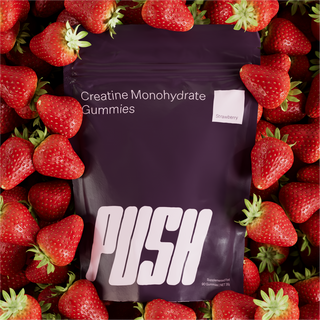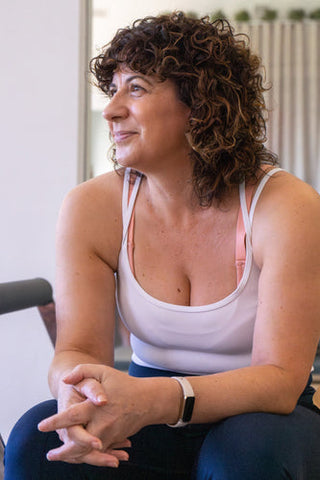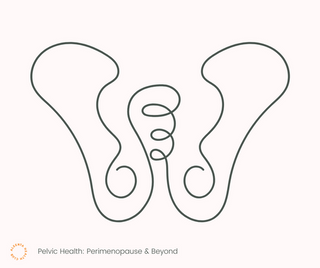Pilates has been around for nearly a century, and in that time, it has been used and recommended for numerous purposes. From rehabilitation for injuries and chronic pain, to improving balance, flexibility and coordination in athletes and dancers. Pilates boasts positive change for your body, both inside and out! Since its rise in popularity in the 80s and 90s, scientists have sought to find evidence that supports these proposed benefits that Pilates lovers and teachers alike have claimed to experience. So, what does the science say?
External Changes
We define “external changes” as those that you can see - you may notice better posture in the mirror, or observe an increase in strength either by simply having more muscle mass or being able to use heavier weights in class.
1. Increased core strength
Pilates places a strong emphasis on developing the abdominal muscles, which includes your core, lower back, and hips. A 2016 scientific review found that across 9 different studies:
“Pilates exercises performed on the mat or apparatus 2 to 3 times a week, for 5 to 12 weeks, improves abdominal muscular endurance (on average, 10 more abdominals curls in 1-minute sit-up test) for both genders, when compared to no exercises.”(i)
2. Improved flexibility
Pilates exercises often involve stretching and lengthening muscles, which can lead to improved flexibility and range of motion. This can be particularly beneficial for individuals who have tight muscles or limited mobility, especially as we age. In recent studies on older adults, Pilates was found to increase mobility, particularly when it comes to walking (ii), and proved more effective than static stretching when it comes to improving flexibility (iii).

3. Build and strengthen muscles
Pilates incorporates both strength and resistance training by using your body weight and/or specialised equipment including the reformer machine, small ball, magic circle and resistance bands. This helps to tone and strengthen your muscles. A 2009 study found that adults practising beginner-intermediate Pilates three times a week significantly improved relative body fat, and strengthened muscles used for shoulder reach, curl-ups and low back extensions (iv).
4. Better posture and alignment
Through the practice of Pilates, you can become more aware of your body's alignment and learn to engage the correct muscles to support good posture. In Pilates, we encourage the slight forward flexion of the cervical vertebra, the stabilisation of the scapula, the “connection” of the rib cage to the hips and the slight, posterior pelvic tilt. This posture has several benefits, including reduced pain in the back, neck and shoulders.
A 2010 study found that just 2 1-hour Pilates sessions a week was effective in improving abdominal strength and upper spine posture, as well as in stabilising core posture when shoulder flexion movements were performed, supporting the use of Pilates in the prevention of neck-shoulder disorders (v).
Several studies focus on the treatment of lower back pain with Pilates, and is perhaps the most supported and well-researched aspect of the practice. Since core weakness has been recognised as one of the primary contributors to lower back pain, and Pilates promotes the strengthening of these muscles, it is widely supported as effective treatment (vi).
5. Improved balance and coordination
Pilates exercises often incorporate challenging movements that require balance and coordination. By consistently practicing these exercises, you can improve your balance and coordination skills, which can be beneficial not only in daily activities, but to reduce fall risk as well. A 2014 study on older adults with a median age of 69 found that after just 5 weeks of Pilates classes, the participants had improved postural sway and dynamic balance. These improvements remained 1 year post-training too (vii)!

Internal Changes
As well as the external, physical benefits, Pilates’ focus on mind-body connection has lead the practice to provide several internal benefits, particularly for the autonomic nervous system and mental health, including:
1. Improved breathing
Pilates emphasises deep and controlled breathing techniques. By incorporating specific breathing patterns into the exercises, Pilates can enhance your lung capacity, oxygen intake, and overall respiratory function. Whilst research supporting this is still new, there are studies to support the cardiorespiratory benefits of Pilates. This 2019 review found Pilates effective in increasing VO2 max across 10 studies, including for both healthy individuals and those with disorders related to aerobic capacity (viii).
2. Increased body awareness and mindfulness
Pilates encourages you to focus on the present moment and develop a heightened sense of body awareness. A 2016 study found that just one Pilates session per week had psychological benefits for its participants, including significant improvements in body awareness (ix). Through mindful movement and concentration, you can become more attuned to your body, its sensations, and its needs.

3. Enhanced circulation and cardiovascular health
The flowing movements and controlled exercises in Pilates can stimulate blood flow and circulation throughout your body. Improved circulation can have numerous benefits, including better delivery of oxygen and nutrients to your muscles and organs, faster recovery from workouts, and enhanced overall cardiovascular health. A recent study examined the effectiveness of Mat Pilates training on women with elevated blood pressure. The results found that after 12 weeks of training, the participants showed improved systemic arterial stiffness, aortic blood pressure, wave reflection, plasma circulation and overall vascular health (x).
4. Improved mental wellbeing
We’ve discussed the mental health benefits of exercise previously on our blog, and Pilates is no exception. The same study that found increased body awareness in its participants also showed favourable changes in positive and negative affect; in laymen’s terms, participants felt good after exercising! (xi)

Research into Pilates and its benefits is still fairly new, and the science is constantly updating. The best way to experience these changes is by getting into class yourself and see whether you agree with science! After all, as little as one class a week is enough to make a difference. Whether you’re seeking improvements in your mental or physical health, Pilates has something to offer for everyone, and the science proves it!
Ready to get started? Check out our 7-day intro offer, exclusively for new clients.
Works Cited
(i) Campos, Renata R and et al. "Effect of the Pilates method on physical conditioning of healthy subjects: a systematic review and meta-analysis." The Journal of sports medicine and physical fitness 56.7-8 (2016): 864-73.
(ii) Bullo, V and et al. "The effects of Pilates exercise training on physical fitness and wellbeing in the elderly: A systematic review for future exercise prescription." Preventive medicine 75 (2015): 1-11.
(iii) Oliveira, Laís Campos de, Raphael Gonçalves de Oliveira and Deise Aparecida de Almeida Pires-Oliveira. "Comparison between static stretching and the Pilates method on the flexibility of older women." Journal of bodywork and movement therapies 20.4 (2016): 800-806.
(iv) Rogers, Kate and Ann L Gibson. "Eight-week traditional mat Pilates training-program effects on adult fitness characteristics." esearch quarterly for exercise and sport 80.3 (2009): 569-74.
(v, vi) Kloubec, June. "Pilates: how does it work and who needs it?" Muscles Ligaments Tendons Journal 1.2 (2011): 61-66.
(vii) Bird, Marie-Louise and James Fell. "Positive long-term effects of Pilates exercise on the aged-related decline in balance and strength in older, community-dwelling men and women." Journal of aging and physical activity 22.3 (2014): 342-
(viii) Fernández-Rodríguez, Rubén and et al. "Pilates Method Improves Cardiorespiratory Fitness: A Systematic Review and Meta-Analysis." Journal of Clinical Medicine 8.11 (2019): 1761.
(ix, xi) Tolnai, Nóra, et al. "Physical and psychological benefits of once-a-week Pilates exercises in young sedentary women: A 10-week longitudinal study." Physiology & Behavior 163 (2016): 211-18.
(x) Wong, Alexei, et al. "The Effects of Mat Pilates Training on Vascular Function and Body Fatness in Obese Young Women With Elevated Blood Pressure." American Journal of Hypertension 33.6 (2020): 563-69.






